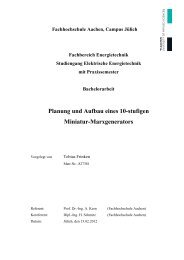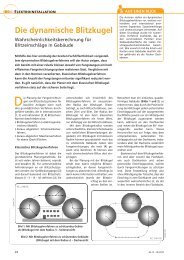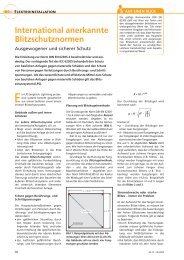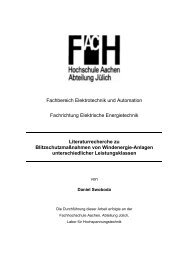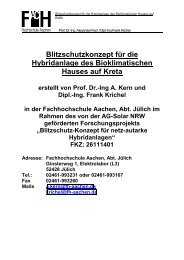Simulation of electric and magnetic fields using FEMM - FH Aachen ...
Simulation of electric and magnetic fields using FEMM - FH Aachen ...
Simulation of electric and magnetic fields using FEMM - FH Aachen ...
Create successful ePaper yourself
Turn your PDF publications into a flip-book with our unique Google optimized e-Paper software.
Select an arc segment, press Space button <strong>and</strong> then in the column “in conductor”, we<br />
associate them with matching conductors.<br />
Set up the properties <strong>of</strong> conductor <strong>and</strong> material. But set the middle circle to “In conduct:<br />
None”, we regard it as a non-material layer. The other settings remain the same. As shown<br />
below.<br />
Figure 2-16 Attach conductor to its property<br />
Figure 2-17 Layer 1 Gnd<br />
2.2.5 Add materials to the model<br />
The properties <strong>of</strong> material are already given,σr <strong>of</strong> material in „schicht1‟ is 10; σr <strong>of</strong><br />
material in „schicht2‟is 1. We use “Properties”→“Materials” to define them.<br />
Here we give both σx <strong>and</strong> σy the same number. In this way, σr will be determined as the<br />
value we need.<br />
σr =10 for schicht1. The relative <strong>electric</strong>al permittivity can‟t be 0, so we make it 1 here, but<br />
it doesn‟t influence the result.<br />
Figure 2-18 Property <strong>of</strong> material 1




